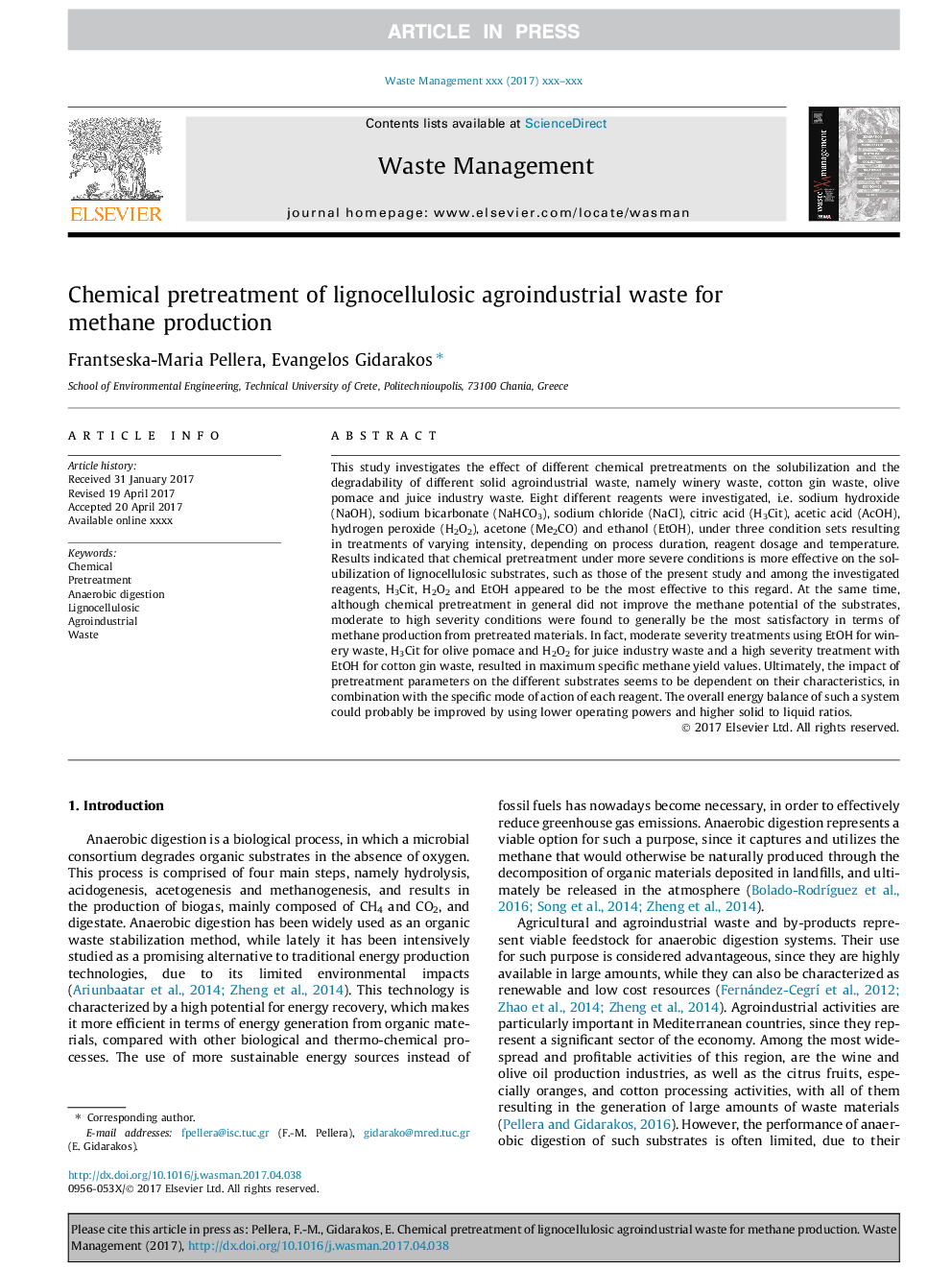| کد مقاله | کد نشریه | سال انتشار | مقاله انگلیسی | نسخه تمام متن |
|---|---|---|---|---|
| 8870369 | 1622615 | 2018 | 15 صفحه PDF | دانلود رایگان |
عنوان انگلیسی مقاله ISI
Chemical pretreatment of lignocellulosic agroindustrial waste for methane production
ترجمه فارسی عنوان
پیشگیری شیمیایی از زباله های صنایع لجن خالص برای تولید متان
دانلود مقاله + سفارش ترجمه
دانلود مقاله ISI انگلیسی
رایگان برای ایرانیان
کلمات کلیدی
شیمیایی، پیش درمان هضم بی هوازی لیگنوسلولز، صنایع کشاورزی، هدر،
موضوعات مرتبط
مهندسی و علوم پایه
علوم زمین و سیارات
مهندسی ژئوتکنیک و زمین شناسی مهندسی
چکیده انگلیسی
This study investigates the effect of different chemical pretreatments on the solubilization and the degradability of different solid agroindustrial waste, namely winery waste, cotton gin waste, olive pomace and juice industry waste. Eight different reagents were investigated, i.e. sodium hydroxide (NaOH), sodium bicarbonate (NaHCO3), sodium chloride (NaCl), citric acid (H3Cit), acetic acid (AcOH), hydrogen peroxide (H2O2), acetone (Me2CO) and ethanol (EtOH), under three condition sets resulting in treatments of varying intensity, depending on process duration, reagent dosage and temperature. Results indicated that chemical pretreatment under more severe conditions is more effective on the solubilization of lignocellulosic substrates, such as those of the present study and among the investigated reagents, H3Cit, H2O2 and EtOH appeared to be the most effective to this regard. At the same time, although chemical pretreatment in general did not improve the methane potential of the substrates, moderate to high severity conditions were found to generally be the most satisfactory in terms of methane production from pretreated materials. In fact, moderate severity treatments using EtOH for winery waste, H3Cit for olive pomace and H2O2 for juice industry waste and a high severity treatment with EtOH for cotton gin waste, resulted in maximum specific methane yield values. Ultimately, the impact of pretreatment parameters on the different substrates seems to be dependent on their characteristics, in combination with the specific mode of action of each reagent. The overall energy balance of such a system could probably be improved by using lower operating powers and higher solid to liquid ratios.
ناشر
Database: Elsevier - ScienceDirect (ساینس دایرکت)
Journal: Waste Management - Volume 71, January 2018, Pages 689-703
Journal: Waste Management - Volume 71, January 2018, Pages 689-703
نویسندگان
Frantseska-Maria Pellera, Evangelos Gidarakos,
